iLAB - Integrated Lithosphere-Asthenosphere Boundary Study
Dan Bassett, Steven Constable, and Kerry Key
The plate tectonic revolution fundamentally changed our understanding of Earth, and geology texts were completely re-written as a result.
We are all familiar with the volcanoes, fault systems, and subduction zones
that form the plate boundaries, yet the biggest plate boundary of all, the lithosphere-asthenosphere boundary (LAB) at the base of the plates, is poorly understood. This
project seeks to change that.
iLAB - Integrated Lithosphere-Asthenosphere Boundary Study - brings together an international team of scientists to study the LAB from its genesis at the mid-Atlantic
ridge to when it is 40 million years old. The participants include:
Satish Singh (IPGP) (visit the IPGP iLAB web page)
Nicholas Harmon (Southampton) (visit the Southampton PI-LAB web page)
Kate Ryhchert (Southampton)
Mike Kendall (Bristol)
Ingo Grevemeyer (Geomar)
Steven Constable (Scripps)
Kerry Key (Scripps)
Under National Science Foundation funding, the Marine EM Lab is participating in a one-month cruise on the research vessel Marcus G. Langseth to
deploy 39 marine MT instruments at the same locations as Southampton and IPGP are deploying 39 ocean-bottom seismometers. These instruments will
be down for a year, to be recovered along with the OBS instruments in early 2017. The batteries on the MT instruments will only allow 60 days data collection, but that is plenty enough for broadband marine MT. Dan Bassett
will be representing Scripps on the deployment cruise.
Good news! The recovery cruise, in March 2017, was a huge success. We recovered 38 out of the 39 seafloor instruments,
which for a one-year deployment is pretty good. We initially suspected that the glass floatation spheres might have failed, but it now looks as
though poorly made battery packs in the acoustic units might have leaked. A bad batch of batteries is a marine geophysicist's worst nightmare, so
we still count ourselves lucky. All instruments recorded data, most of it of good quality.
Data Availability: The raw time series data can be downloaded
from MGDS here .
The processed MT data in .zmm format: line 1 and line 2 .
Dan's daily Log from
the R.V. Langseth
All photos
are copyright Dan Bassett, unless noted
otherwise.
Sunday March 27- Homeward bound!
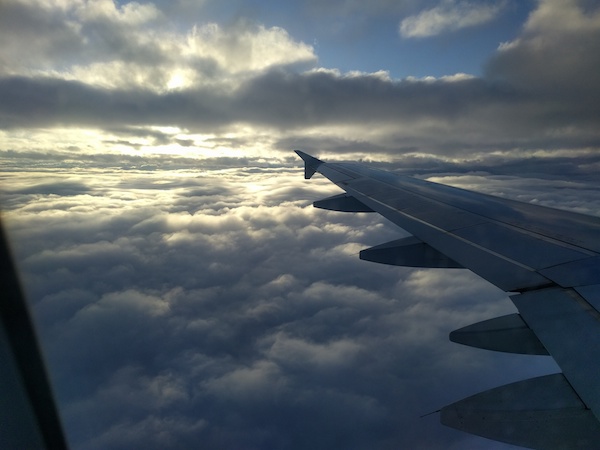
Saturday March 26- Our chariot from Cape Verde to Lisbon. Not dissimilar from an airport on Mars.
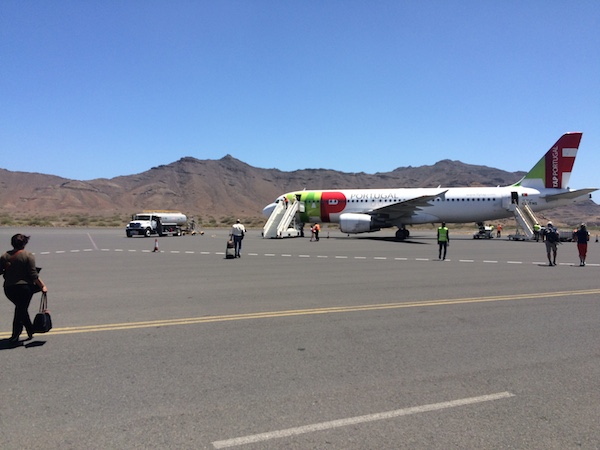
- Hissing island from the air shortly after leaving Mindelo
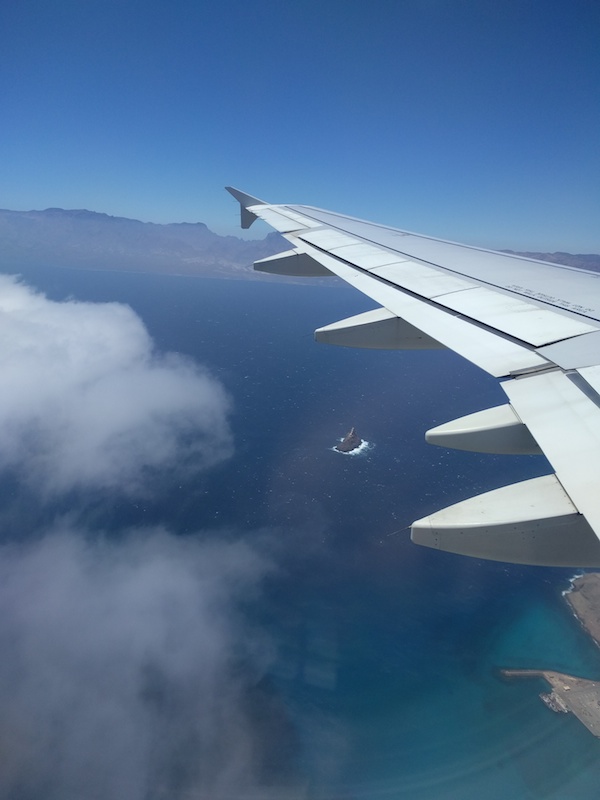
Friday March 25- Pleased to be sailing back in Mindelo after a successful cruise.
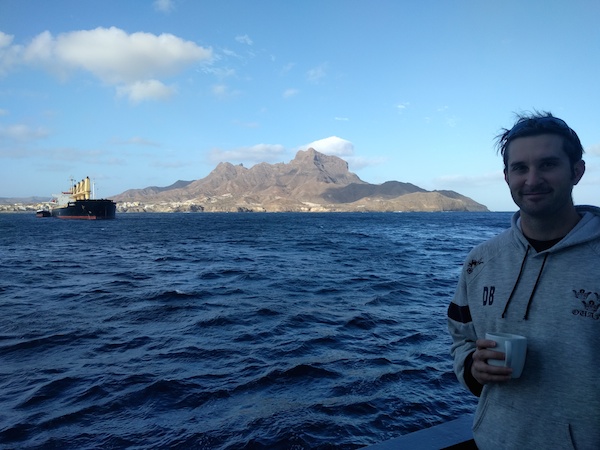
- Group shot of the science party
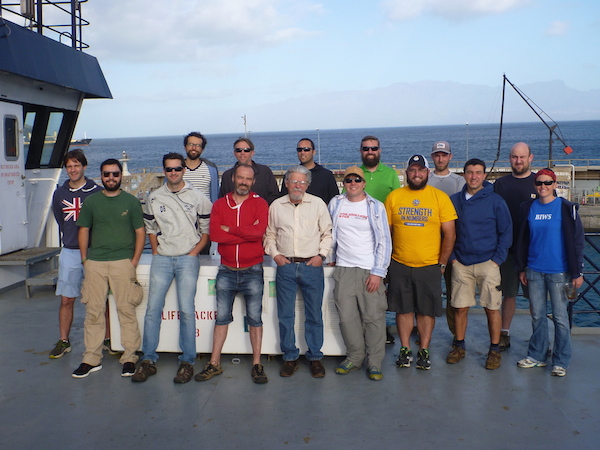
- View looking back toward the Langesth and Midelo from Mt Verde (elev. 750 m)

- Chris and me at the summit of Mt Verde.

- Chris and Sean taking in the view from Mt Verde.
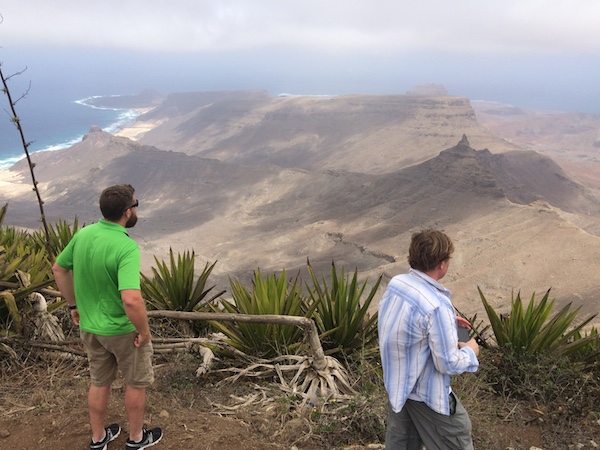
- The crew and science party winding down with a few well earned drinks by the beach
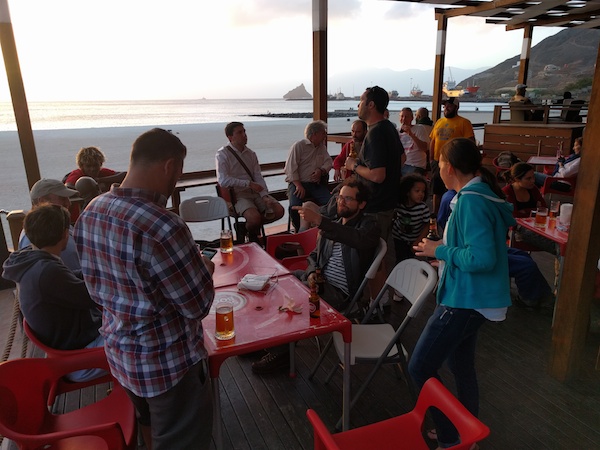
- The sun setting on our final night in Cape Verde.

Thursday March 24- Calmer seas and nice sunrises after getting back among the islands.
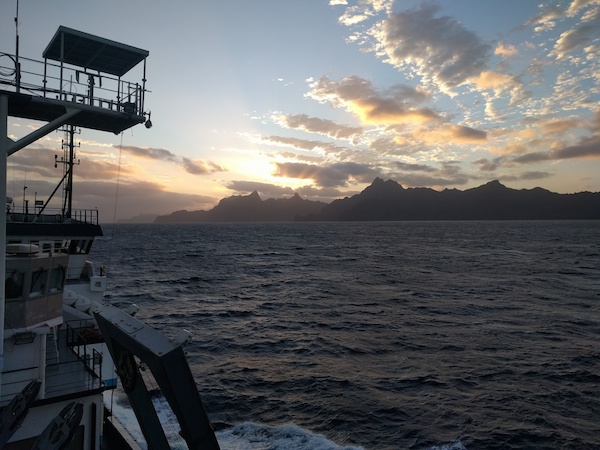
Tuesday March 23: Progress to date:

Tuesday March 23 - Wild weather and high-seas as we make our way north.
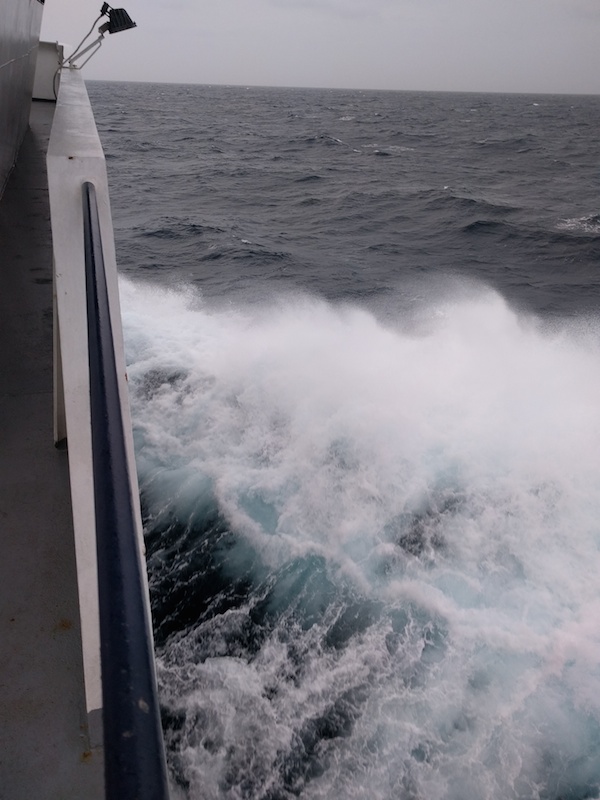
Wednesday March 24 - Waiting in the dry-lab for our initiation to begin
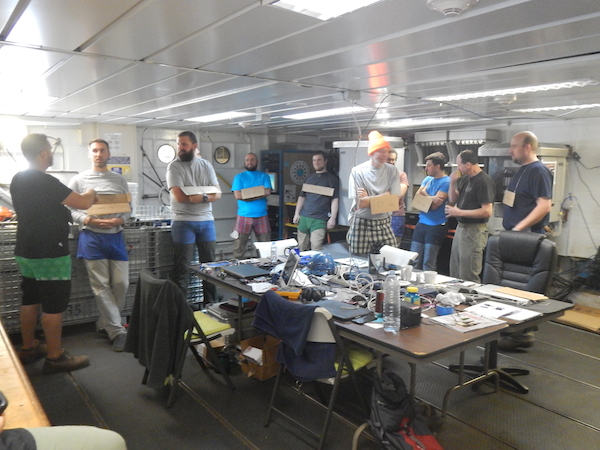
Wednesday March 24 - SIO OBS Tech Sean McPeak knealing before court and
confessing to Neptune

Wednesday March 24- Sean crawling through the belly of the whale
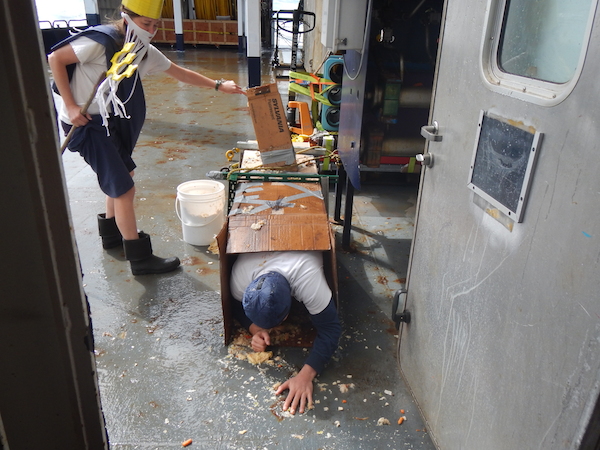
Wednesday March 24 - Group shot following our group performance and
successful induction
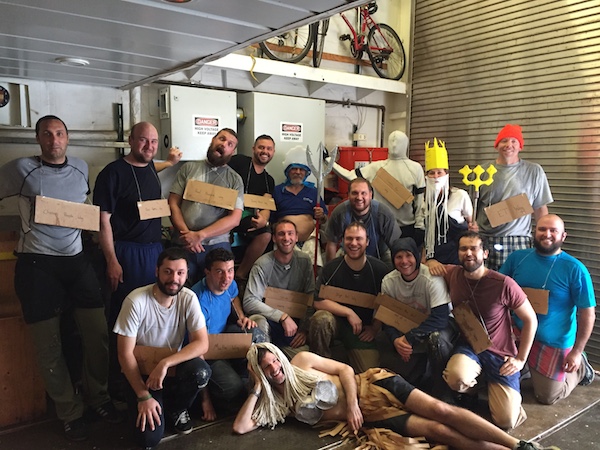
Sunday March 21 -
Enjoying another nice sunset in the Atlantic:

Saturday March 20 -
Enjoying the sunset on the OBS deck:
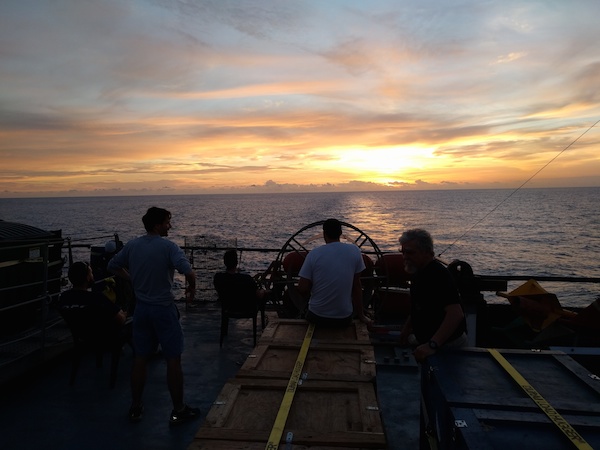
Friday March 19 -
The deck of the Langesth before making out
last three deployments:
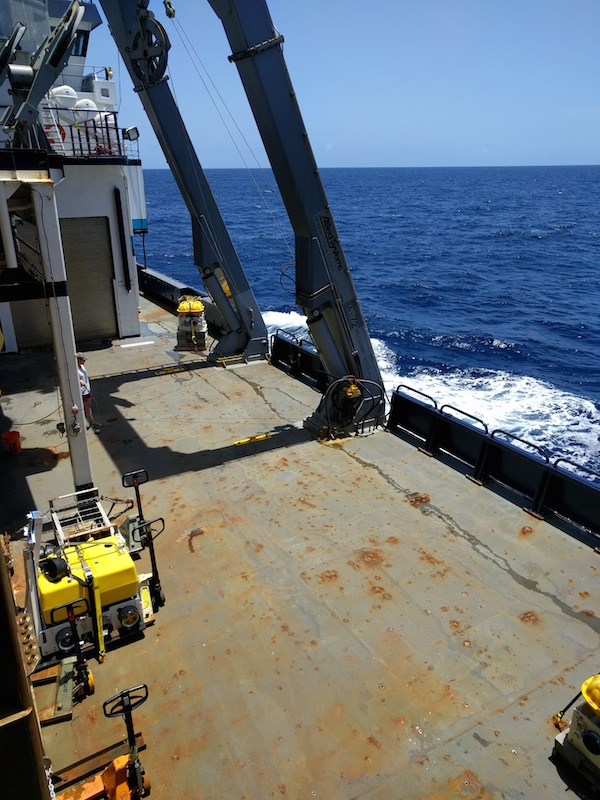
Saturday 12 March - Aerial shot of Jake and me deploying an OBMT
instrument:
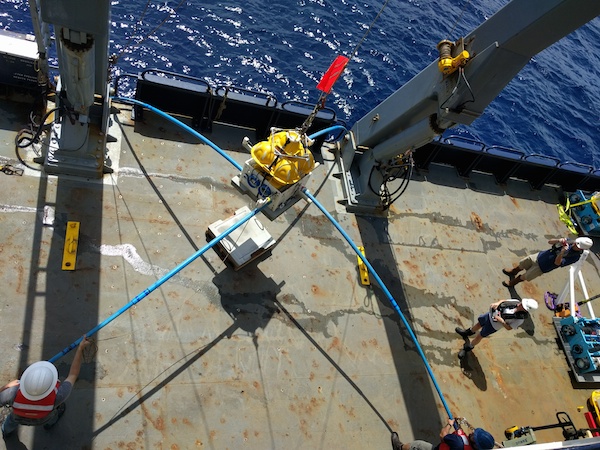
Saturday 12 March - Rainbow bringing good omens to our OBMT instrument:
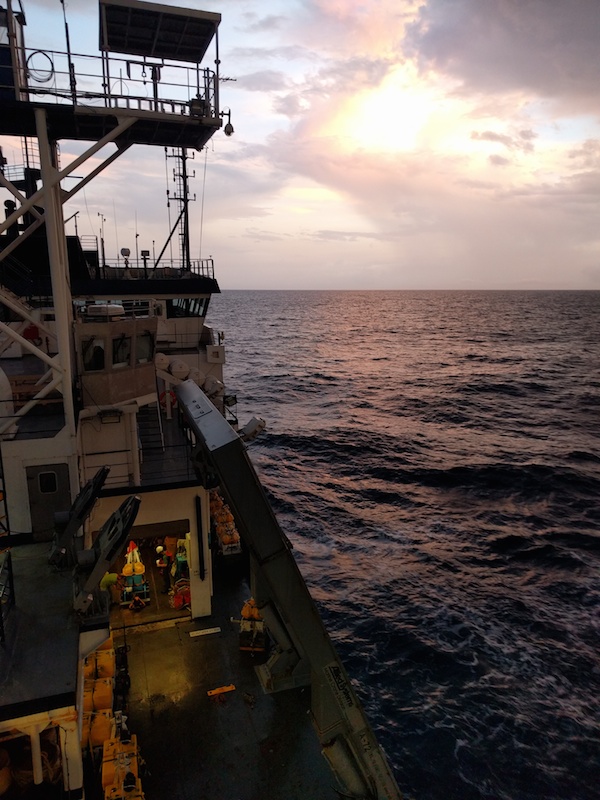
Friday 11 March - Checking the acoustic release prior to deployment:
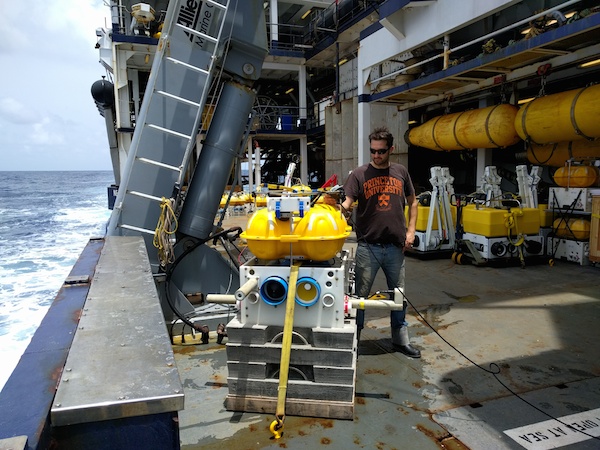
Friday 11 March - Jake smuggling oranges in his calves:

Friday 11 March - The rapidly clearing deck of the R/V Langseth:

Thursday 10 March- Jake, Ernie and Sean deploying a Scripps OBS:
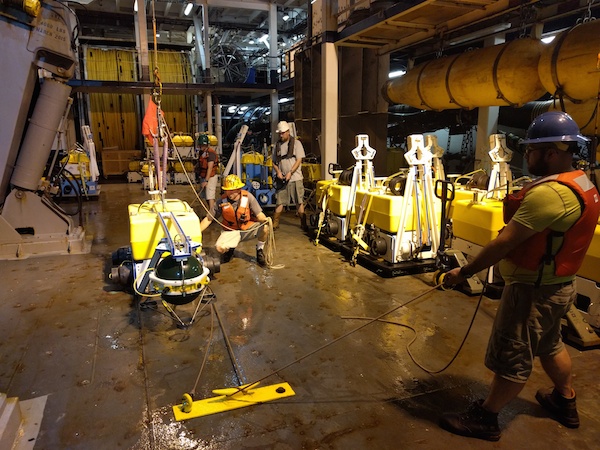
Wednesday 9 March- The first rain we experienced came in a 30
minute torrential downpour:

Wednesday 9 March - Nice sunset:

Tuesday March 10 - Watching the safety boat launch:
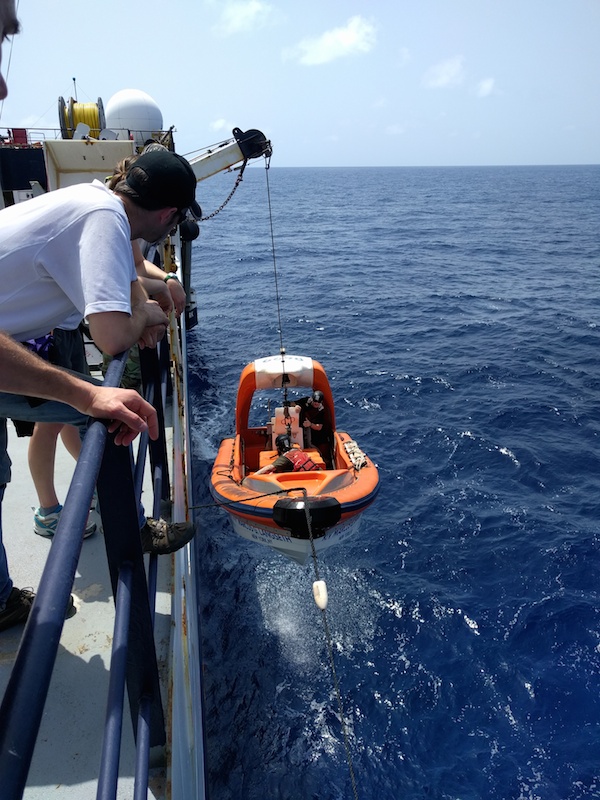
Monday March 7 - Pulling the release line:
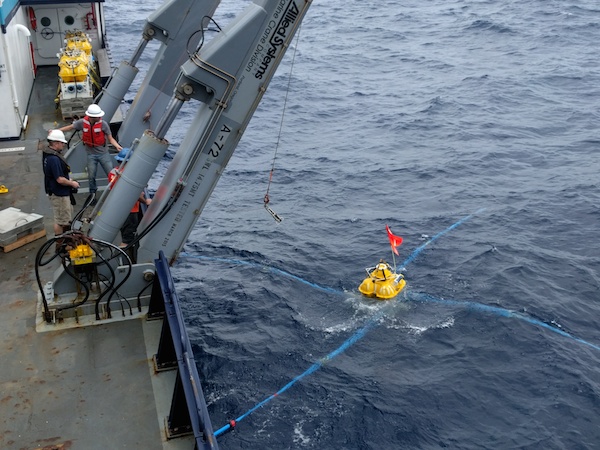
Saturday Monday March 7 - Jake and me preparing electrode arms in the wet lab (2):

Saturday Monday March 7 - Jake and me preparing electrode arms in the wet lab (1):
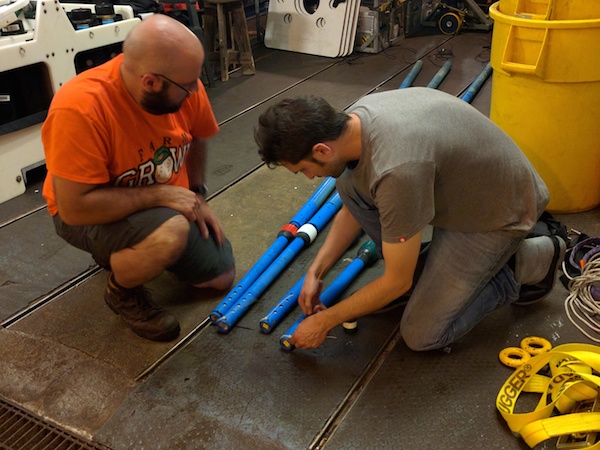
Saturday Sunday March 6 - Science officer Alan Thompson looking uncomfortable after suggestions that squid sightings could be signs of a nearby Kraken:
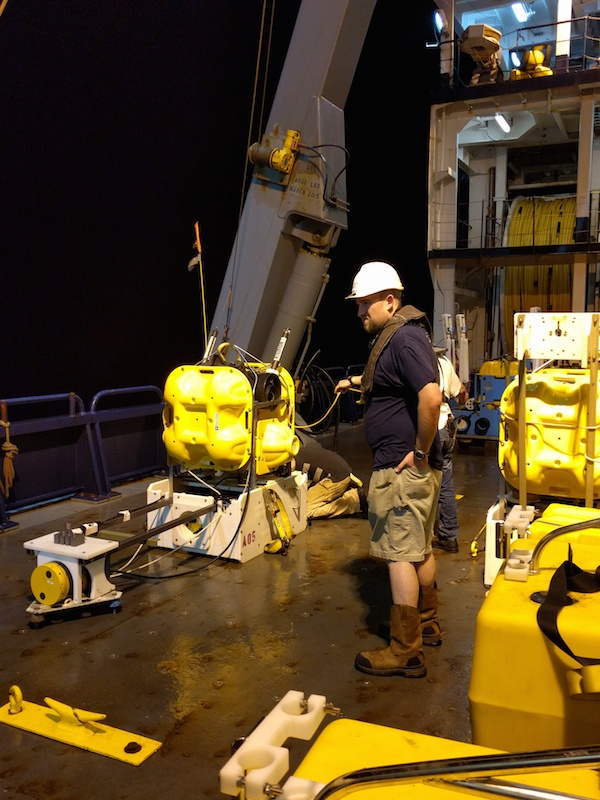
Sunday March 6 - John and Carlos from LDEO preparing their OBS for deployment:
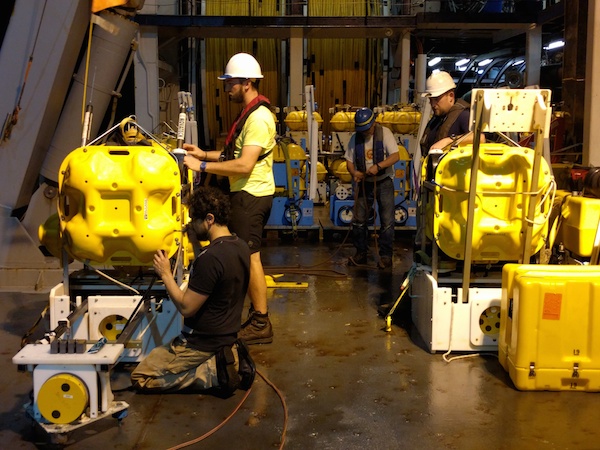
Saturday 5 March: Chris and Bobby deploying our first MT receiver. (Photo credit Jake Perez) :

Saturday 5 March: Recovering yet another dunking transducer after trying to ping on our receiver. (Photo credit Sean McPickle)
:
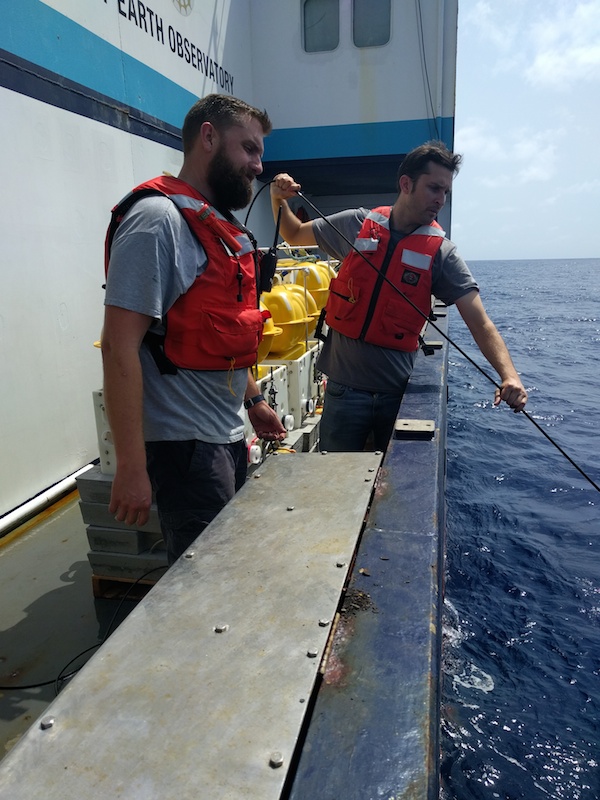
Saturday 5 March: Recovering the rosette from the acoustic release test
:

Saturday 5 March: IPGP broadband OBS on deck:

Saturday 5 March: IPGP broadband OBS deployment
:

Saturday 5 March: IPGP broadband OBS deployment
:

Tuesday 1 March: Enjoying the scenery as we leave Cape Verde.
Photo credit (Sean McPeak):

Monday 29 Feb: Walking back to the Langseth after our final stroll in Mindelo. Tomorrow morning we set sail for the Mid-Atlantic Ridge.
Photo credit (Sean McPeak):
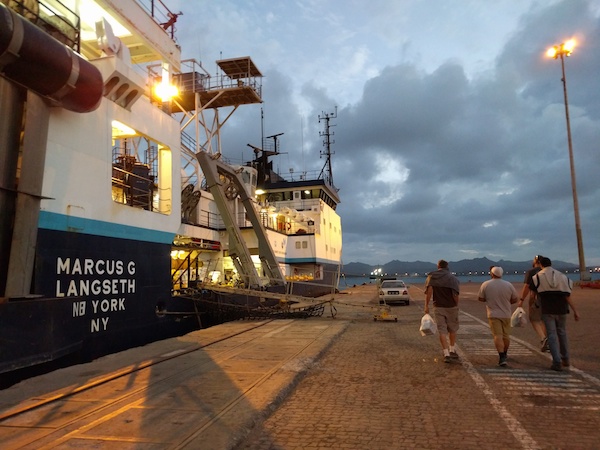
Sunday 28 Feb: Deck post-loading:

Saturday 27 Feb: Deck pre-loading:

Friday 26 Feb: Unloading containers onto dock.:

Thursday 25 Feb: R/V Marcus G. Langseth in Mindelo:
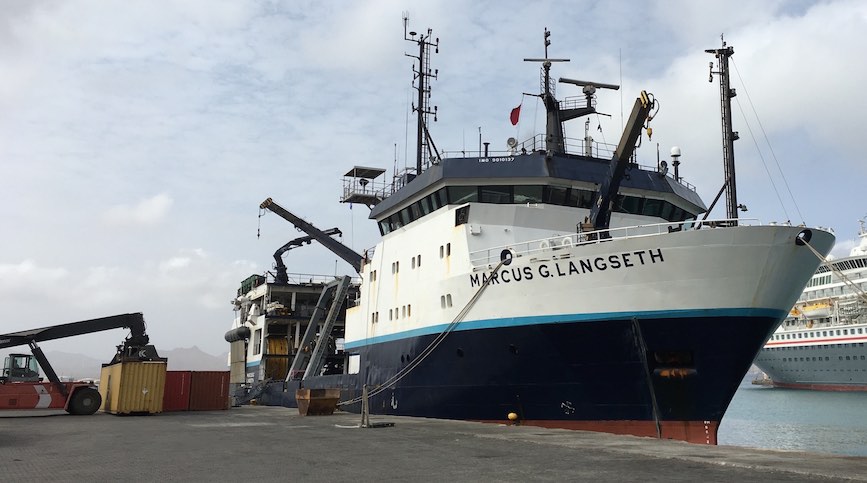
The beach in Mindelo, looking back towards the hotel:

Chris and Sean taking in the sights of downtown Lisbon:

Location of the research area showing OBS locations (which are all MT sites):

|